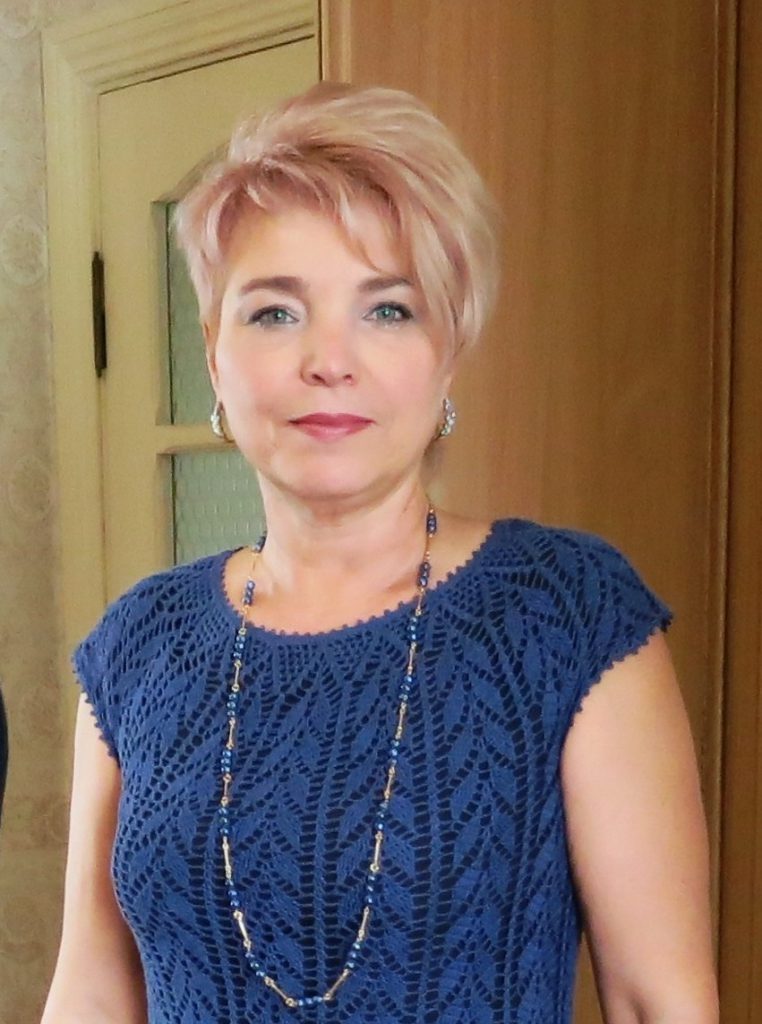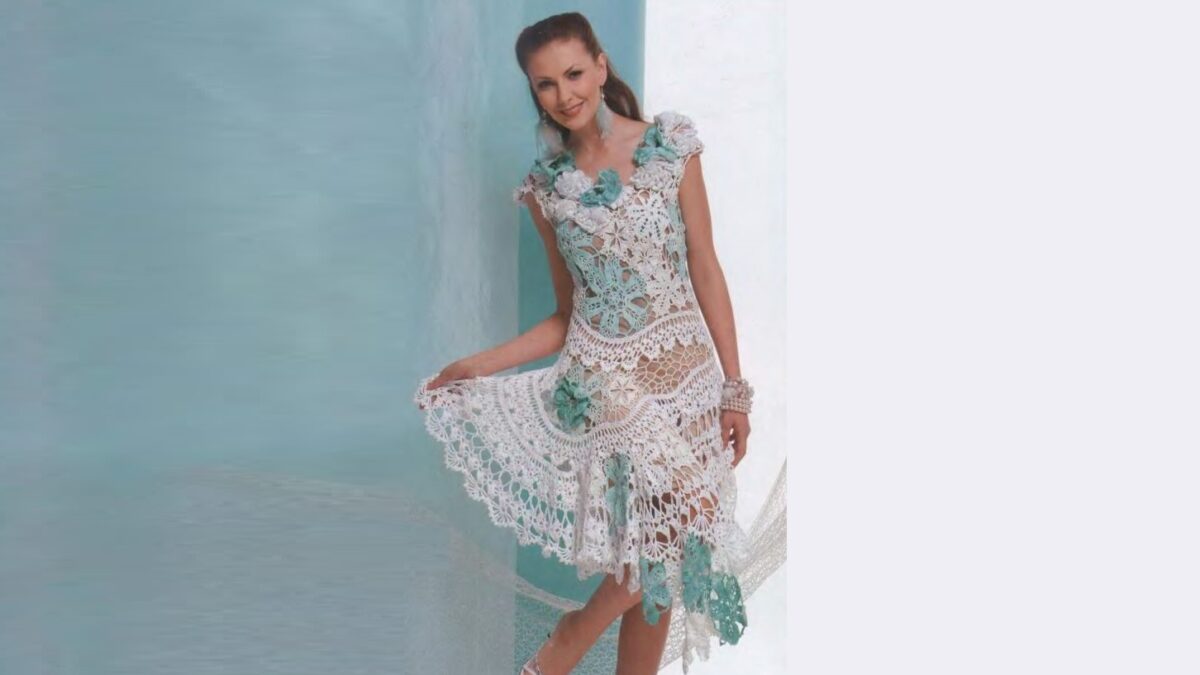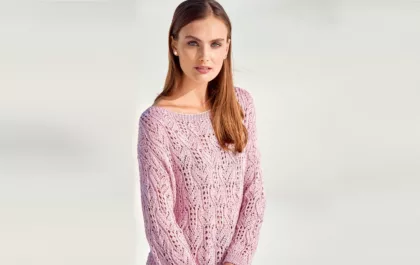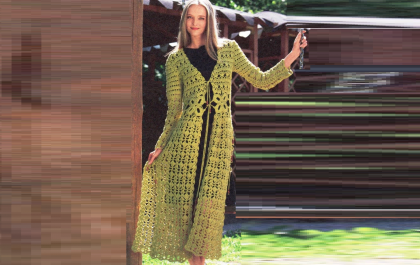
A light openwork dress for the most daring fashionistas is made in different techniques. Guipure lace is complemented by some elements of Bruges lace. The complex braid complements the already complex model.
Model Anna Vititina
Size 42. The model is crocheted.
You will need:
– 800 g of cotton yarn with white viscose;
– hook No. 2.5;
– needle;
– “malachite” beads of round and oval shape;
– beads for “pearls”;
– a little fancy yarn with a white pile;
– green acrylic paint.
The dress is made using the technique of interlocking guipure and Bruges lace. The use of a small group of motifs allowed the author to create a harmonious composition. The author manages to model the silhouette of the product, obtaining the effects of expansion and asymmetry of the canvas, while maintaining fashionable proportions, thanks to the use of 2 versions of the original braid. It is impossible to copy a model in detail, but with creativity and the ability to improvise, you will create your own unique piece.
To begin, make a working pattern (see Figure 2) according to your measurements.
Knit the motifs of large flowers according to pattern 2 and flowers according to pattern 2a, for which first make a braid of 6 scallops, close in a circle and tie with scallops with “picot” along the outer contour. Then knit leaves of different sizes, guided by patterns 2b and 2c. Motifs should not be cloned in detail. Deviations from the proposed schemes are only welcome, because being carried away by the creative process, you create your own, new and original options.

You can manipulate the size and shape of leaves by:
– knitting a larger (smaller) number of stitches in the cast-on chain for each petal;
– the height of double crochets when knitting the 1st row of the fillet pattern. By gradually increasing the height of the columns towards the top of the petal, you model its outline;
– changes in the height and number of double crochets when tying the 1st row;
– changes in the number of VPs in the cells of the fillet row. The degree of openwork of the motif depends on this.
Iron the finished motifs from the wrong side. Next, lay them out on the pattern face down, focusing on the location in the photo, or create your own composition. Then fix the most appropriate position with basting.
Connect the motifs together using a thread and a needle along the wrong side of the fabric. Fill the gaps with irregular mesh fragments. To create the impression of the integrity of the lace fabric when filling the pattern with a composition of motifs, join the side seams of the parts.
Continue working, knitting the braid according to patterns 2d and 2d and connecting individual fragments of the fabric, as well as strips of braid, with each other using chains of VP or RLS.



Carry out the connection by grasping the edges of the elements to be connected one by one in a rhythm that you determine experimentally during the work. For the option of forming an openwork fabric made in a combination of guipure lace with braid, as well as modeling the expansion in the lower part of the dress, see diagram 2e.

Decorate the finished dress with voluminous details. To do this, knit 2 flowers according to the pattern and sew them randomly onto identical motifs and along the neckline. Using pattern 2g, tie the spirals, form them into flowers, then sew them onto the dress. Attach pieces of yarn with a pile to the center of the flower. Next, proceed to tonal coloring of individual fragments of the canvas with acrylic dye, following the instructions on the package. Finally, sew beads into the centers of the flowers and the openwork cells of the leaf petals.








Related posts
About the Author

Welcome !
My name is Lilia. The main hobby of my life is knitting. I started with knitting needles and switched to a knitting machine. In 1988 I got acquainted with crochet - Romanian lace. About 10 years ago I became interested in Irish lace and Shetland knitting. And now I’m trying fillet crochet. On this site I want to share with you my 45 years of experience in various knitting techniques.
Latest publications
Пуловер с ажурным узором из «листьев»
Пуловер нежно-розового цвета ручной работы, связанный ажурным узором из шелковистой пряжи.
Black openwork jumper
Set “Crystal Rose”
Knitted coat with an openwork pattern in light green color
Knitted coat with an openwork pattern in light green color
Blog Subscription
Be the first to receive new items!



